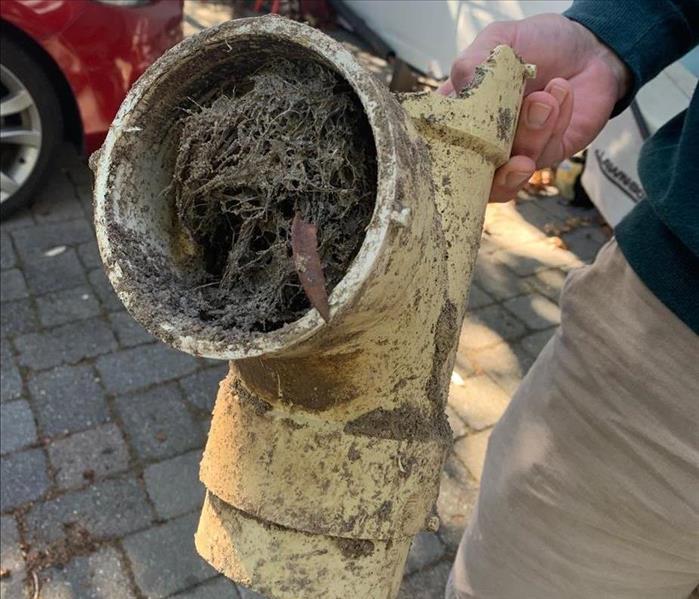Cleaning a Flooded Basement
1/31/2022 (Permalink)
Groundwater flooding is basically water in your basement caused by seepage or flows through the walls or foundation floor.
According to State Farm Insurance, there are four common sources of water entering basements. Each source has its own specifics and requires its own course of action.
Surface water running down foundation walls.
If this is the first instance of water problems in your basement, the first thing to check for is surface water draining down next to the foundations. Water coming in at one location or only at the exterior foundation wall indicates surface water problems. Here are some things to look for once you get outside.
- Overflowing gutters: leaves
- Overflowing gutters: downspouts
- Downspout distance
- Pavement slope
- Sealant
- Landscape slope
- Irrigation
Groundwater in water-saturated soils is being pushed into the basement by hydrostatic pressure.
If no surface water sources are found, then the source of the water is likely subsurface groundwater under hydrostatic pressure. When the groundwater levels outside the basement rise above the level of the floor, the basement acts like a boat in a pond. If a boat is sitting in water, water will leak in through any open cracks or holes. It works the same way with a basement. Hydrostatic pressure can push water through hairline cracks.
Unfortunately, subsurface groundwater problems are more difficult and more expensive to fix than surface groundwater problems.
Storm sewer water from the municipal storm sewer system backing up into the home's existing perimeter foundation drain and leaking into the basement.
If you have an older house within town and the house has a basement with no sump pump, it is likely the perimeter foundation drain system connects directly into the city storm sewer system. If the level of the basement is below the street level, there is the potential of stormwater backing up in the city storm sewer system and being pushed into the perimeter foundation drain system. This can saturate the soils around the house at the basement level with stormwater under hydrostatic pressure, causing water to leak in.
- Underground springs
- Stormwater backing up
- Sewer water backing up
Sanitary sewer water from a clog in your home's sewer line. If there is a clog in the municipal sewer line, or the combined municipal storm/sanitary sewer system backing up into the home's drain system, it can cause sewer water to come up through sink drains and floor drains on lower levels.
Whatever the cause of water in your basement, remember it is important to have it dried out as soon as possible by a professional. SERVPRO of Eatontown/Long Branch is available 24/7 and will be able to get to your water damage quickly.




 24/7 Emergency Service
24/7 Emergency Service
